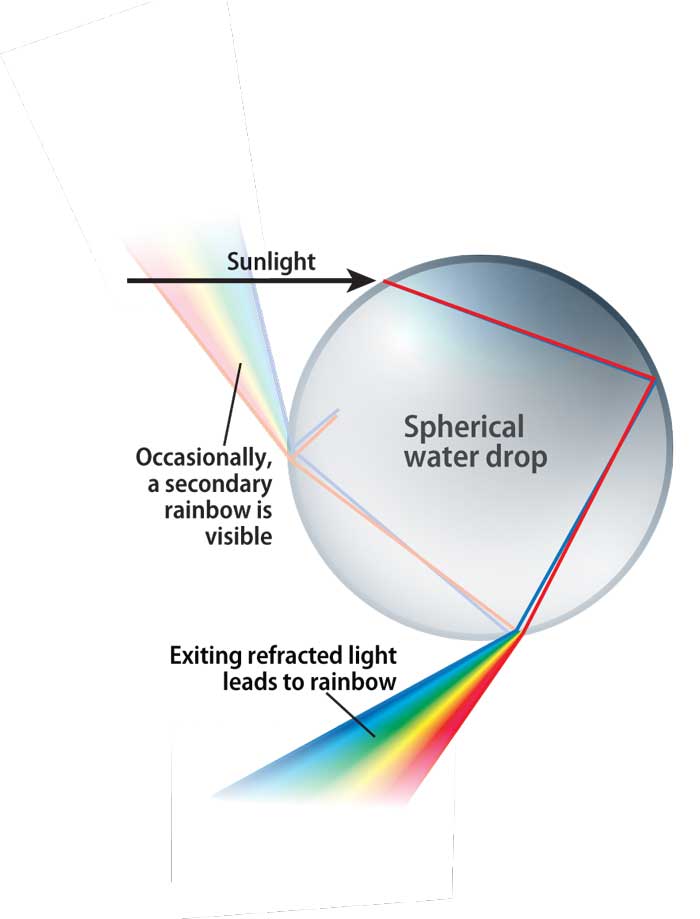People occasionally mistake some ice halos for rainbows, though. Sunlight passing through tiny hexagonal ice crystals in the form of plates and long columns creates colorful halos, sundogs, circumzenithal arcs (sometimes called “upside-down rainbows”), 22-degree halos, and so on. But again, these halos need simple and optically perfect crystals. Snowflakes can sometimes produce a sun pillar, but no other halos.
Even so, we might see a rainbow or ice halo during a snowstorm. When temperatures are not too low, small raindrops occasionally accompany snow and could form a rainbow that shines through the snow. Also, under the right conditions, some tiny crystals perfect enough to form halos might mix in with the snow.
Snow can form a rainbow-colored halo on the ground rather than in the sky. Snow crystals thaw and recrystallize slightly during daily temperature changes and morph into larger, simple crystals that glint brightly in sunlight to make a ground halo. Look for one the next time you’re walking in sunlit snow. — Les Cowley, Atmospheric Optics (www.atoptics.co.uk), England










